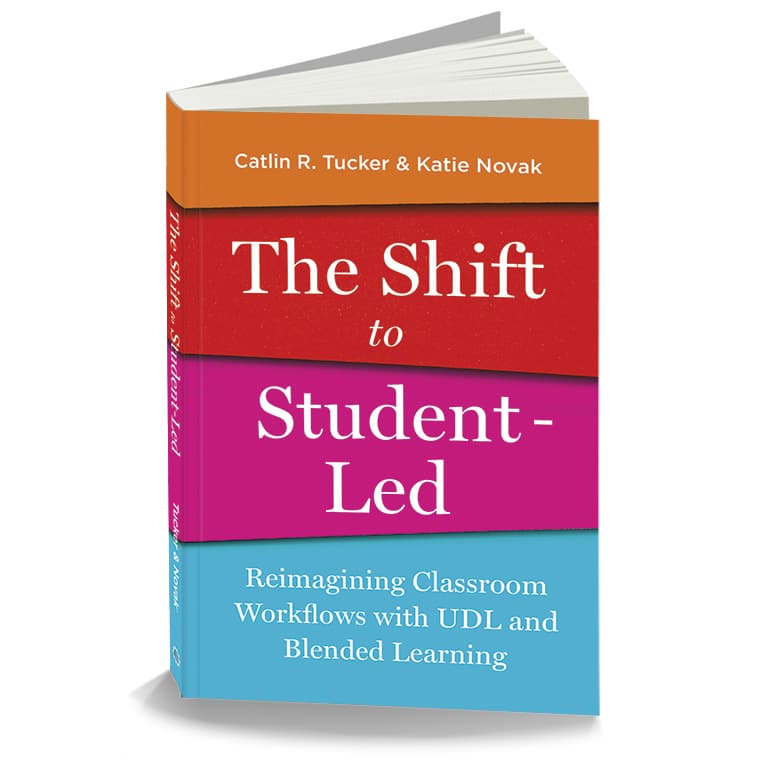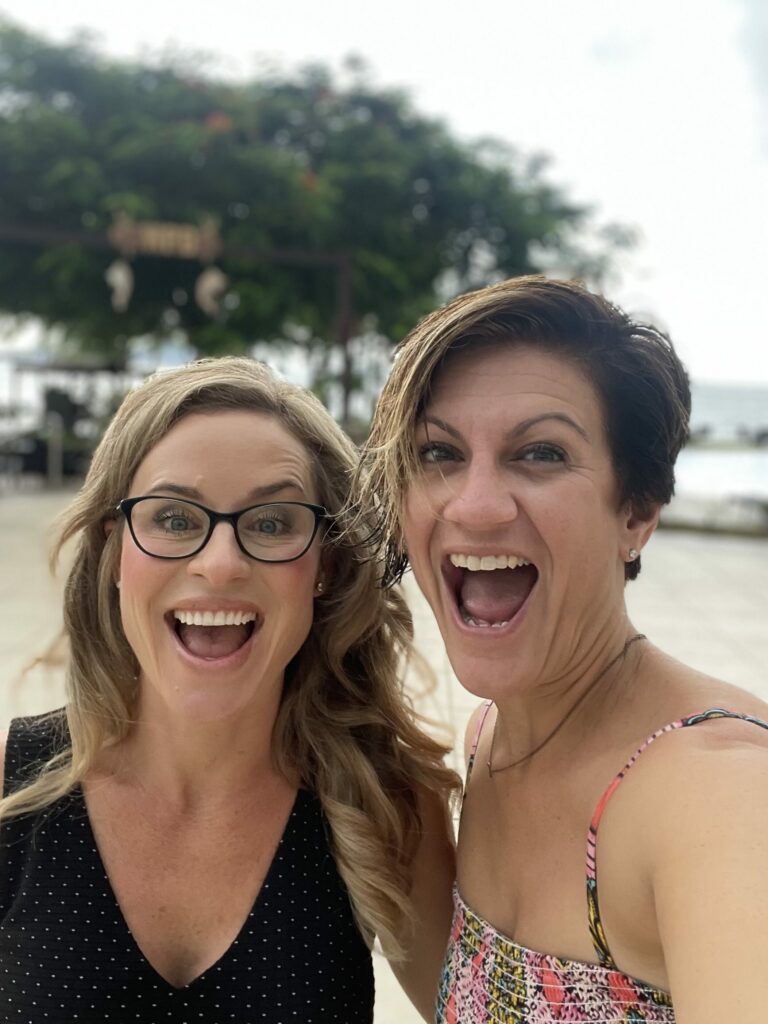I am thrilled to announce that Dr. Katie Novak and I teamed up to write a second book exploring the synergy between Universal Design for Learning and blended learning! In this second book, The Shift to Student-led: Reimagining Classroom Workflows with UDL and Blended Learning, Katie and I wanted to accomplish two goals. First, we want teachers to rediscover their joy and reengage in this profession. Second, we want students to develop into expert learners capable of sharing ownership of learning so teachers are not doing the lion’s share of the work.
Why did we write this new book?
The last few years have left many teachers exhausted, frustrated, and disillusioned with this profession. They are drowning in work and unrealistic demands. The status quo is not serving them or their students. They need concrete strategies and resources they can use to reimagine their approach to this work so that it is sustainable and rewarding.
Students also need to learn how to engage in the learning process fully. In many classrooms, students are still occupying the role of silent observer and consumer. They are not challenged to develop their metacognitive muscles, assess their work, provide each other with substantive feedback, and communicate their progress with the people in their lives. That translates into students who are not invested in their learning. Learning is something that is happening to them. They are much like fans sitting in the stands watching a game unfold on the field. Instead, students must be active, engaged participants in the learning process. This is the only way to cultivate expert learners who are resourceful, strategic, motivated, and self-aware. The more students actively engage in all parts of the learning process, the less pressure there is on the teacher to do all the work.
This book identifies 10 time-consuming, teacher-led, and frustratingly ineffective workflows and reimagines them using Universal Design for Learning (UDL) and blended learning. The goal of each workflow shift is to position the student as an active agent and blossoming expert learner to make these workflows more sustainable and effective! We want teachers to view students as partners in learning and arm them with the strategies and skills necessary to share the responsibility for learning with us.
This book is jam-packed with specific strategies, templates, and resources teachers can use to take what they are learning and implement these shifts immediately! We include “reflect or discuss” questions and application activities at the end of every chapter, making it the perfect read for a single teacher or a great book study text for a group of teachers!





7 Responses
It is very creative to have a student-led classroom. Teachers need specific strategies and resources that can be used to rethink their working methods to make them sustainable and rewarding. Students also need to learn how to participate fully in the learning process and actively participate in the learning process. This is the only way to cultivate resourceful, strategic, motivated, and self-conscious expert learners. The more students actively participate in all parts of the learning process, the less pressure the teacher has to do all the work.
Love book and wondering if the referenced templates are accessible online.
Yes! There’s a QR code in the book you can use to access them, Steve.
Take care.
Catlin
Hello! Can you give me any tips on how to present Workflow shift #5 to K-8 teachers who are reading the book? I am a Kindergarten teacher and am presenting this all by myself. Some of our staff, including myself are struggling to deeply understand how to implement these practices, even though we CAN see the benefits! Please… Are there any ideas you can share with me to help with teacher buy-in and create some excitement! Our school is totally awesome, and our teachers are very intelligent and caring!
Hi Lacey,
Asking questions drives deeper thinking about topics and repeated exposure to review activities helps students retain their learning. In elementary, it’s important to stress to teachers that this is a process that has value in and of itself. I recommend the following when working with teachers helping to onboard young learners to the process of generating review questions and activities.
Begin by explaining the purpose of creating review questions and materials and how it will benefit them and their classmates (e.g., foster collaboration, critical thinking, and a deeper understanding of the content). Then model the process of creating review questions and materials. Choose a simple topic and demonstrate how to formulate questions. Teachers should conduct a think aloud while doing this to make their thinking explicit. I also suggest teachers do this foundational work in a teacher-led small group as part of a rotation to allow the teacher the opportunity to differentiate this modeling session to ensure all students understand the process.
Once students understand the value and the process, encourage them to brainstorm review questions as a group. This can be done through class discussions where students share their ideas, and the teacher writes them on the board or a chart. Teachers can provide sentence starters to help students in this process and can provide feedback on the questions shared asking the group to evaluate the clarity and quality of questions, offering suggestions for improvement. Teachers can also create templates or worksheets that young students can use to organize their review questions and materials. Templates can include spaces for questions, answers, and any visuals or drawings.
After students have been onboarded to the process, the goal is to transition this into independent work that students do in pairs or as a small group. Early elementary may want to stick with questions while upper elementary and middle school can tackle choice boards, as described in the chapter.
Young learners get particularly excited when they know their questions are being selected for review activities on Kahoot! or other review platforms.
Another option is to have young learners create a physical board game that integrates their questions. It adds a creative, tactile component that they enjoy.
Good luck with your presentation!
Take care.
Catlin
Hi! Just finished the book and I am excited to implement it to ky teaching. Here down under, we are going to start a new school year. I am just wondering if you have an introductory letter template for students and parents to explain this teaching methodology. if you have, may I please have a copy?
Hi Anna,
I don’t have a letter introducing this approach to student-led learning. I have to explain often, but I have not put it in a letter for parents. Most of the teachers I support include a note in their syllabus about their philosophy, but I can see a letter being a valuable way to communicate with parents, especially if you are shifting mid-year. I do recommend being clear with students why you are using specific techniques, so they understand the value and purpose.
Take care.
Catlin